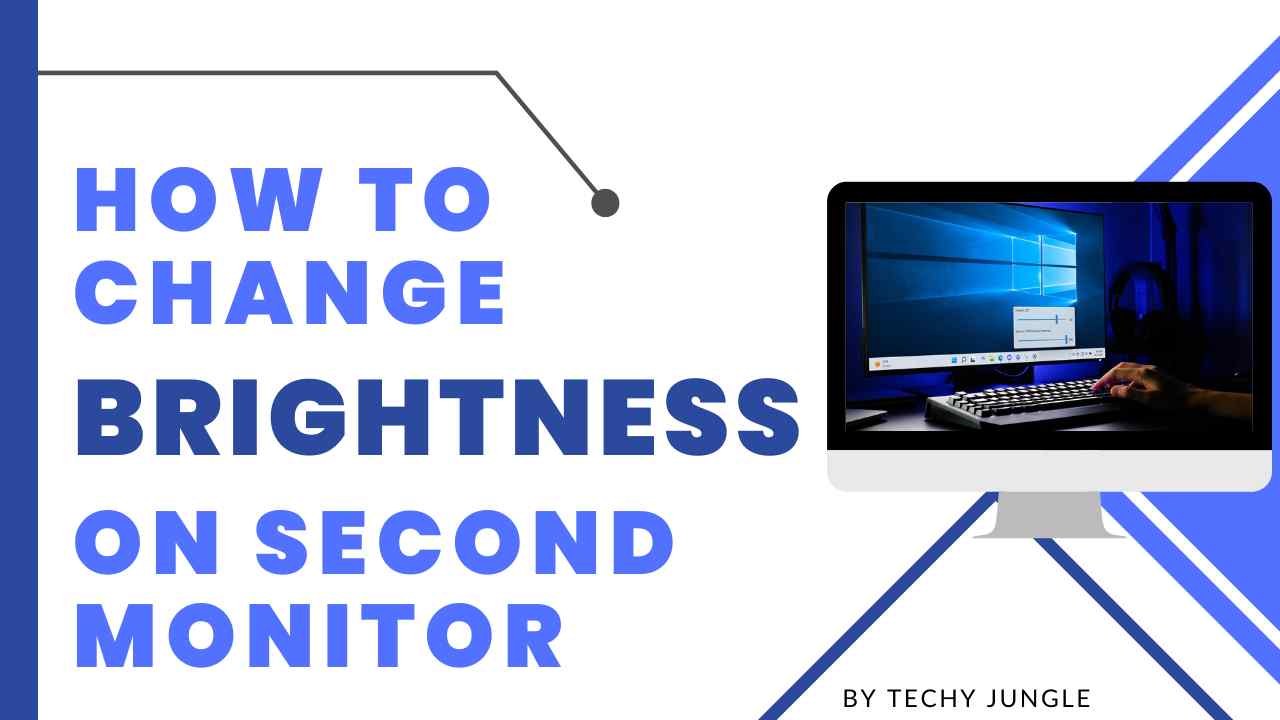When it comes to setting up a dual monitor setup, one of the most important things to consider is getting the brightness levels just right. After all, having a bright monitor and a dim one can cause eye strain and make it difficult to work for extended periods of time. If you’re using a second monitor on your Windows 10 system, you may find that adjusting the brightness can be a little tricky. In this article, we’ll show you how to change the brightness on your second monitor on Windows 10.
Table of Contents
Different Ways to change brightness on second monitor on Windows 10
There are a few ways to change the brightness on a second monitor on Windows 10:
- Through Display Settings: The easiest way to change the brightness on a second monitor is through the Display Settings. You can access this by right-clicking on the Desktop and selecting Display Settings from the context menu. From there, you can adjust the brightness using the Brightness and color section.
- Using Keyboard Shortcuts: Some laptops and keyboards have specific keys or key combinations that can be used to adjust the brightness. Check your keyboard manual or the manufacturer’s website to see if this is possible.
- Graphics Card Control Panel: If you have a dedicated graphics card, you may be able to change the brightness using the graphics card control panel. To access this, right-click on the Desktop and select Graphics Options or Graphics Properties. Look for a section that allows you to adjust the brightness.
- Third-party software: There are also third-party software programs available that allow you to adjust the brightness on a second monitor. Examples of such programs include Display Tuner and Display Brightness.
Note: The availability of these methods may depend on the graphics card, monitor, and drivers installed on your system.

Through Display Settings:
Step 1: Right-click on the Desktop and select Display Settings The first step in adjusting the brightness on your second monitor is to access the Display Settings on your Windows 10 system. To do this, right-click on an empty area of your Desktop and select Display Settings from the context menu.
Step 2: Scroll down to the Multiple Displays section In the Display Settings window, scroll down until you see the Multiple displays section. This section provides information about the monitors that are connected to your system.
Step 3: Identify the monitors Under the Select and rearrange displays section, you’ll see an Identify button. This button allows you to label the monitors so you know which one you want to adjust the brightness for. Click the Identify button and you’ll see a number appear on each of your monitors, indicating which is which.
Step 4: Click on the monitor you want to adjust Once you’ve identified the monitor you want to adjust the brightness for, click on it in the Display Settings window.
Step 5: Adjust the brightness using the Brightness and Color section In the Brightness and color section, you’ll see a slider that allows you to adjust the brightness. Use the slider to adjust the brightness to the level you prefer.
Step 6: Apply and save the changes Once you’ve adjusted the brightness, click Apply and then OK to save the changes. The new brightness level will now be applied to your second monitor.
Using Keyboard Shortcuts:
Here are the steps to change brightness on a second monitor using keyboard shortcuts on Windows 10:
- Connect the second monitor to your computer.
- Right-click on the Windows desktop and select Display Settings.
- Scroll down and click on the “Advanced display settings” link.
- Select the second monitor and click on the “Display adapter properties for Display X” link.
- Click on the “List all modes” button and select a resolution that includes a “Recommend” label.
- Click on the “Apply” button and then the “Keep changes” button.
- Press Windows key + X and select “Control Panel”.
- In the Control Panel, click on “Power Options”.
- Click on “Choose what the power buttons do”.
- Click on “Change settings that are currently unavailable”.
- Scroll down to the “Shutdown settings” section and enable the “Turn on fast startup” option.
- Restart your computer.
- Press Windows key + X and select “Control Panel”.
- In the Control Panel, click on “Power Options”.
- Click on “Choose what the power buttons do”.
- Click on “Change settings that are currently unavailable”.
- Scroll down to the “Shutdown settings” section and enable the “Turn on fast startup” option.
- Restart your computer.
- Press Windows key + X and select “Control Panel”.
- In the Control Panel, click on “Power Options”.
- Click on “Choose what the power buttons do”.
- Click on “Change settings that are currently unavailable”.
- Scroll down to the “Shutdown settings” section and enable the “Turn on fast startup” option.
- Restart your computer.
- Use the keyboard shortcut Windows key + X and select “Control Panel”.
- In the Control Panel, click on “Power Options”.
- Click on “Choose what the power buttons do”.
- Click on “Change settings that are currently unavailable”.
- Scroll down to the “Shutdown settings” section and enable the “Turn on fast startup” option.
- Restart your computer.
Note: The exact keyboard shortcuts for changing the brightness may vary depending on your specific computer and graphics card.
Using Graphics Card Control Panel:
Here are the steps to change brightness on a second monitor using the graphics card control panel on Windows 10:
- Connect the second monitor to your computer.
- Right-click on the Windows desktop and select Display Settings.
- Scroll down and click on the “Advanced display settings” link.
- Select the second monitor and click on the “Identify” button to highlight its number.
- Right-click on the Windows desktop and select Graphics Properties or Graphics Control Panel (varies by manufacturer).
- Navigate to the display settings or display properties section.
- Locate the brightness, backlight, or contrast settings for the second monitor.
- Adjust the brightness level as desired.
Note: The exact steps may vary depending on the manufacturer and model of your graphics card.
Using Third-party software
Here are the steps to change brightness on a second monitor using third-party software on Windows 10:
- Download and install third-party screen adjustments software, such as Display Tuner or Monitorian.
- Connect the second monitor to your computer.
- Launch the software and select the second monitor.
- Adjust the brightness level as desired.
Note: The exact steps may vary depending on the specific third-party software you choose.
Also Read: Choosing The Right Laptop for Your Needs and Budget
Wrapping Up
In conclusion, adjusting the brightness on your second monitor on Windows 10 is a straightforward process. With these six simple steps, you’ll be able to get your dual monitor setup just right and work comfortably for extended periods of time.








